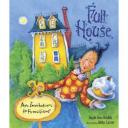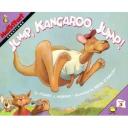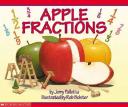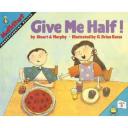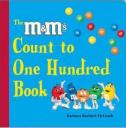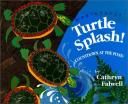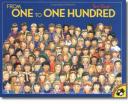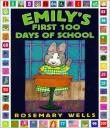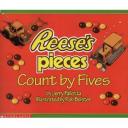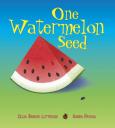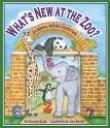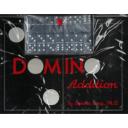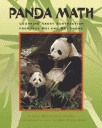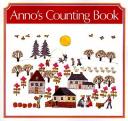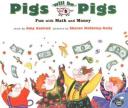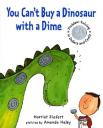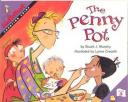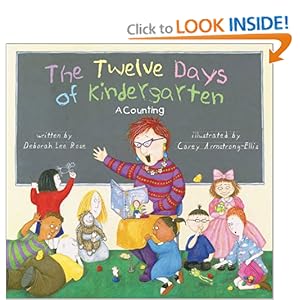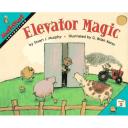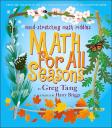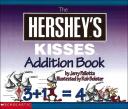This Instructional Resource Set is designed for a second grade fractions unit.
Dodds, Dayle Ann. (2007)Full House: An Invitation to Fractions Cambridge Massachusetts: Candlewick Press.Illustrated by Abby Carter
Dodds writes a book about the Strawberry Inn, and its' innkeeper who records guests as they arrive as occupying a fraction of the six rooms for let. The rhyming prose and the questions posed to students to guess together make this a fun read. The guests discover a delicious midnight snack to share between the group!
Murphy, Stuart (1998) Jump Kangaroo, Jump! New York: Harper Collins. Illustrated by Kevin O'Malley
Stuart Murphy writes about Kangaroo and his friends at camp. This book is great because it explores the division of a set of objects, or in this case animal campers. Frequently students hear about dividing groups in half or into four groups. A fun classroom activity would be to divide the class, established as a whole, into different size groups. Activities like this are made possible with supporting text from Jump, Kangaroo, Jump! and accomplishes two things: children have a physical experience with fractions with the bonus of setting the stage for developing the earliest notions about division.
Pallotta, Jerry. (2002) Apple Fractions. New York, New York: Scholastic. Illustrated by Rob Bolster
Just as we learn that fractions are part of a whole, Apple Fractions introduces students to many varieties of apples, including the hard workers who help keep them growing: the bees! Learning parts of a whole will be engaging and fun with this book, as apple elves busy themselves slicing and dividing a share-with-friends fruit.
Murphy, Stuart. (1996) Give Me Half! New York: Harper Collins.Illustrated by G. Brian Karas
This book is a fun way to explore the easiest fraction while lightly touching on not so easy things to do: sharing with siblings! I like this book because the illustrations by G. Brian Karas support the development of mental imagery while students learn how to identify pieces of a whole.
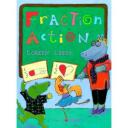
Leedy, Loreen. (1994) Fraction Action! New York, NY: Holiday House.
Loreen Leedy writes and illustrates a story about a classroom learning fractions! With this simple connection, Leedy provide educators with ideas of how to integrate art, food, and common objects into learning about numbers between 0 and 1. It hits the right note with the animal lovers and young artists in your class as well.
1. An interactive way to look at fractions, using circle, strips, volume, and height comparisons from BBC’s Introduction to Fractions.
2. From the NCTM’s Illuminations site, a fraction concentration game:
http://illuminations.nctm.org/ActivityDetail.aspx?ID=73
3. A game of making Magic One by adding two fractions: FractONE:
· http://www.coolmath-games.com/0-fractone/index.html
4. Online quiz: identifying fractional parts of a set
· http://www.ixl.com/math/practice/grade-2-fractions-parts-of-a-group
5. This activity will reinforce parts/whole. Students will enter the numbers in two different text fields. · http://www.ixl.com/math/practice/grade-2-fractions-parts-of-a-group
6. Tangram fractions are presented to young laboratory assistants in this matching game.· http://www.pbs.org/teachers/connect/resources/6936/preview/
7. It’s a Pizza Party, and students must choose from four options which fraction best answers the problem.
· http://www.primarygames.com/fractions/start.htm
ADDITIONAL RESOURCES
· Hillen, Judith. (2000) Fabulous Fractions. Betty Cordel, Ed. Fresno, California: AIMS Education Foundation
· Wiebe, Dr. Arthur. (1998) Actions with Fractions! Betty Cordel Ed. Fresno, California: AIMS Education Foundation
· SuperTeacherWorksheets.com provides many useful reproducibles: http://www.superteacherworksheets.com/fractions.html
· Virginia SOL: http://www.virginiasol.com/test_grade2.htm This site lists a few activities and resource sites.
· Illuminations, from the NCTM. Free lesson plans, activities, and web links. http://illuminations.nctm.org
· Math-Drills.com provides free drills and worksheets. Answer keys are also provided, a timesaving step! Specific to fractions, the link is http://www.math-drills.com/fractions.shtml.
· The Math Forum at Drexel has varied resources: http://mathforum.org/teachers/elem/k-2/

